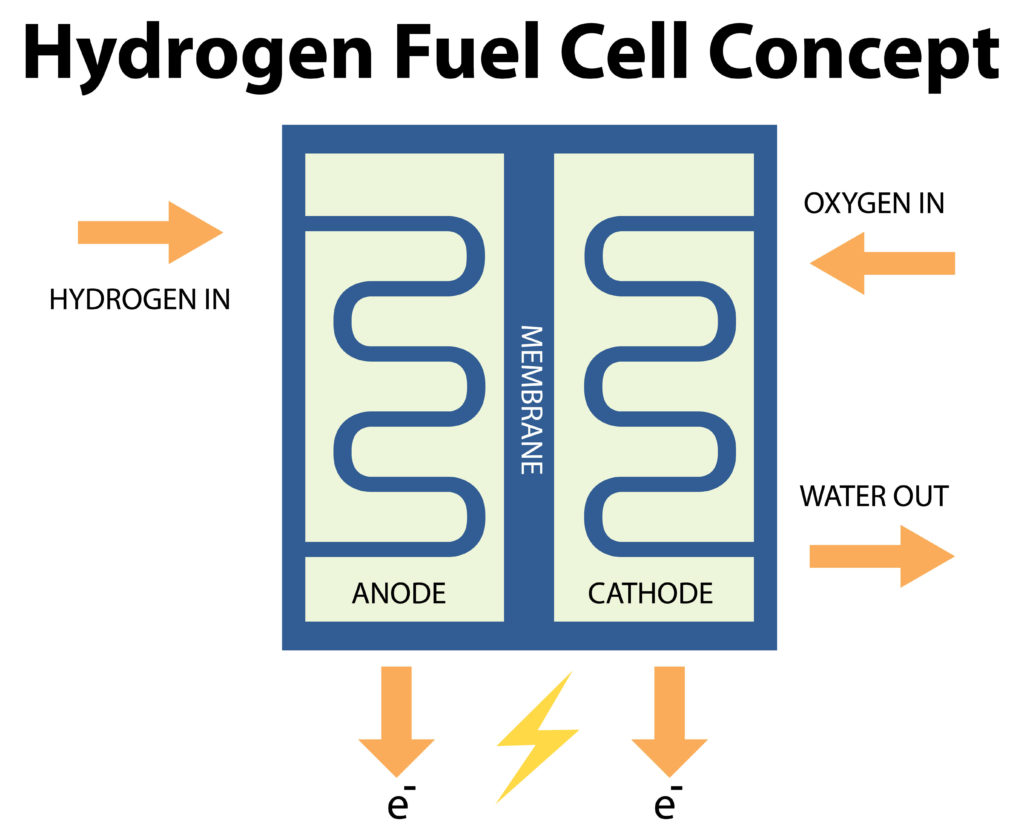
Though most people hadn’t even heard of a hydrogen fuel cell a handful of years ago, their increasingly widespread use as a component of decarbonization projects means that it is becoming an everyday concept. That said, while people have now heard of them, few understand just how they work.
Since many years ago, hydrogen has been used as rocket fuel in the space industry as well as in the electronics, chemical, glass, and metalworking sectors. Hydrogen has further uses, such as producing heat, moving, and storing energy to be converted to electricity later. It can play a very promising role in assisting with the energy transition and decarbonizing numerous sectors.
Hydrogen and oxygen atoms combined to generate energy in a hydrogen fuel cell. Similar to how a battery functions, a reaction between the two types of atoms takes place throughout an electrochemical cell. The US Energy Information Administration (EIA) states that the result is some heat, water, and power.

Even though these units have only lately started to appear frequently in the news, they are not very novel. In actuality, they supply energy to the electrical systems of spacecraft. On Earth, they are also utilized to power several systems. For example, smaller versions have been developed to power laptops and phones.
H2 is the energy carrier with the highest efficiency and lowest power losses when it comes to direct conversion into electricity. That stated, in contrast to electricity produced by renewable energy sources like solar and wind power, H2 can be transported and stored until it is needed. Having said that, those forms of renewable energy can be utilized to drive the production of green hydrogen, which can then be utilized to produce electricity when needed.
So, how does a hydrogen fuel cell generates electricity?
- A hydrogen fuel cell generates electricity by combining hydrogen (H2) and oxygen atoms across an electrochemical cell. This reaction produces electricity, water, and a small amount of heat.
- Hydrogen fuel cells have been used for powering spacecraft electrical systems and various applications on Earth for quite some time. They are now gaining more attention as a component of decarbonization projects.
- Hydrogen fuel cells are being developed and tested for a wide range of applications, including powering cars, data centers, phones, laptops, and even emergency power in remote locations without access to the grid.
- Hydrogen fuel cell requires a supply of molecular hydrogen (H2) to react with oxygen. H2 acts as the energy carrier that is directly converted into electricity with high efficiency and minimal power losses.
Font: Hydrogen Fuel News

Our work with hydrogen
UH2 provides solutions for the electrolysis of carbon-free green hydrogen, which can be distributed and stored for use in steel production, building heating, and fuel cells for automobiles and boats.
Able to provide the full project needs, we strive to add value through rapid acquisitions in strategic locations, implementing ongoing technology improvements and innovative solutions, as well as creating bankable value chains.
At the moment, we are working on H2 and NH3 projects in Brazil, Sweden, Canada, Spain, and Portugal.
Check out our project here.
